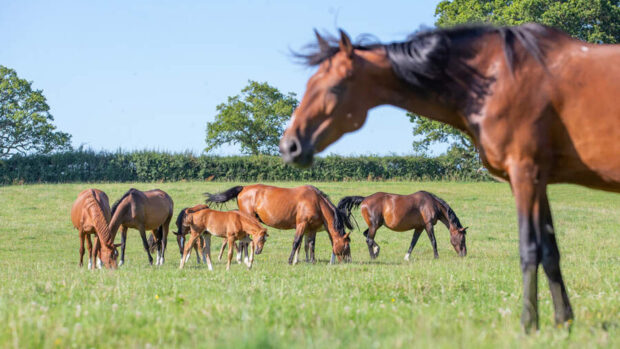Team GBR eventing performance manager Yogi Breisner shares his top tips for improving your cross-country performance in a series of short videos available via the free Horse & Hound and NAF Five Star Cross Country Training app.
1. Learn to change gears
Riding cross-country is a bit like driving a car — you need to be in the correct gear for what’s ahead. With straightforward, big fences, you want the horse to jump out of their stride with the rider in a light, forward position, still with security in the lower leg, so that you don’t waste too much time and energy by making adjustments.
When you come into a tight combination or take a tricky line, though, you need to change down the gears. Depending on the severity of the line or combination, you might go down to fourth, third, or second gear.
The important thing is — like driving a car — once you’ve changed your gear, you then need to ride forward again in the new gear so that you don’t approach the fence going backwards. You should still be going forward, but in a suitable gear to jump what’s ahead of you.
2. Execute effective turns
When you make a turn going cross-country, it will often be in to a combination. Here you can use the turn to your advantage by setting the horse up to create the right canter and the right speed that you need to jump.
The rider is responsible for the direction, balance and pace — while the horse’s job is to look at the fence, measure it and jump it.
In order to get the horse round the turn, it often helps to slightly bend him away from the direction you are going in and to use that as a preparation for the turn. By bending the horse a little to the outside, you’re controlling the outside shoulder.
When you come round a turn, the horse will already be on the correct line into the middle of a fence — and because you’ve looked after the outside shoulder, the horse will now be balanced ready to take that combination on.
3. Be confident at combinations
At BE80, BE90 and BE100, combinations and related distances are fairly open. A dog-leg might have four, five or six strides between the elements — but as you move up the grades, those dog-legs and skinnies become more technically difficult. Even at the lower levels, though, it’s a good idea to jump these fences in the correct way.
When you come galloping across a field, you need to set the horse up, make the turn, control the outside shoulder and take the correct line. You should have a plan — but if something happens then you need to be prepared to react and go with plan B.
Many fences will have alternative routes and so if you’re in trouble, then you might be able to salvage the situation by turning away and jumping a slightly easier route.
The key as a rider is to prepare your horse correctly, get the correct turn and speed — and then ride the line that you decided on when you walked the course.
Download the free Horse & Hound and NAF Five Star Cross Country Training app



